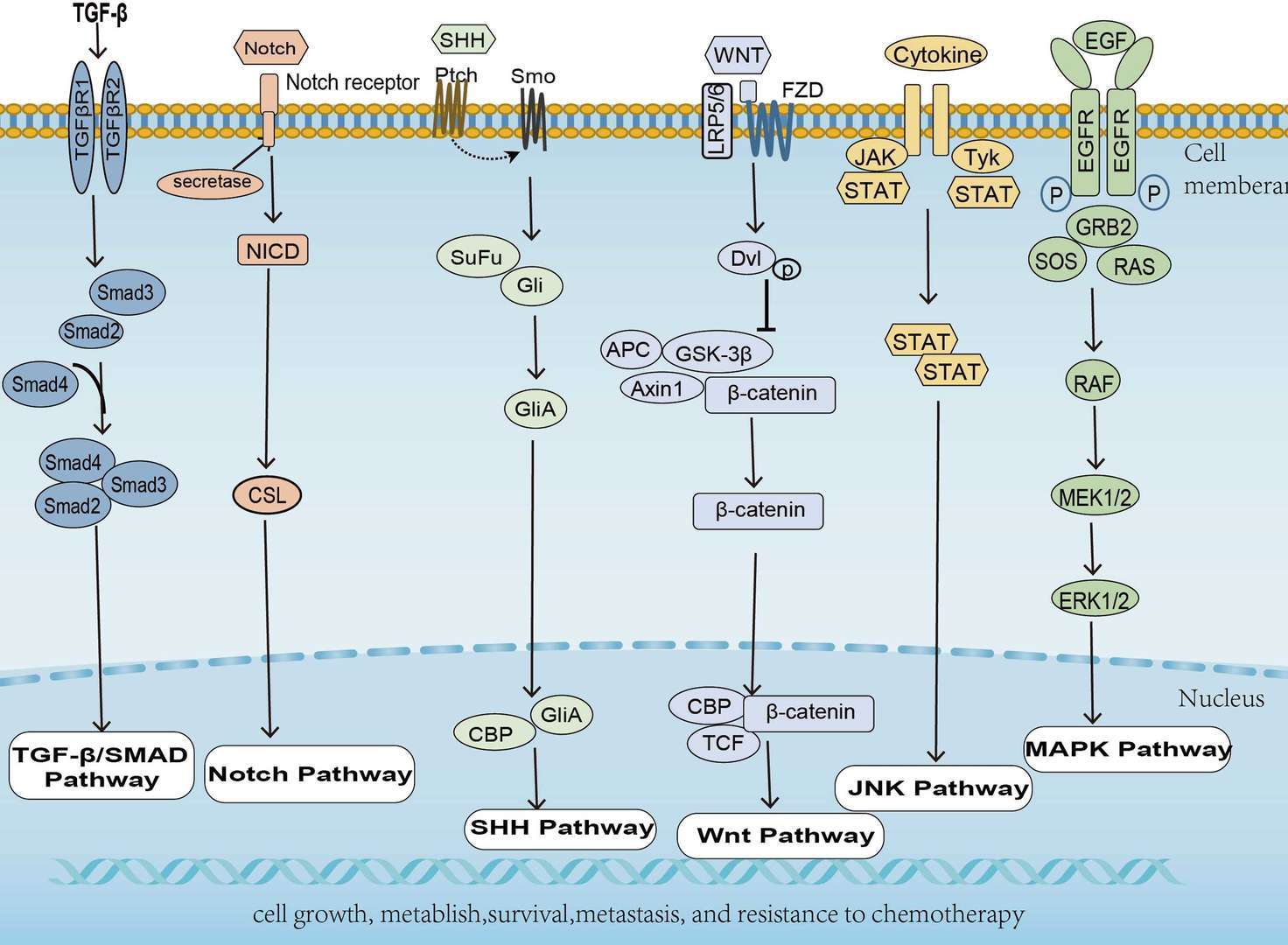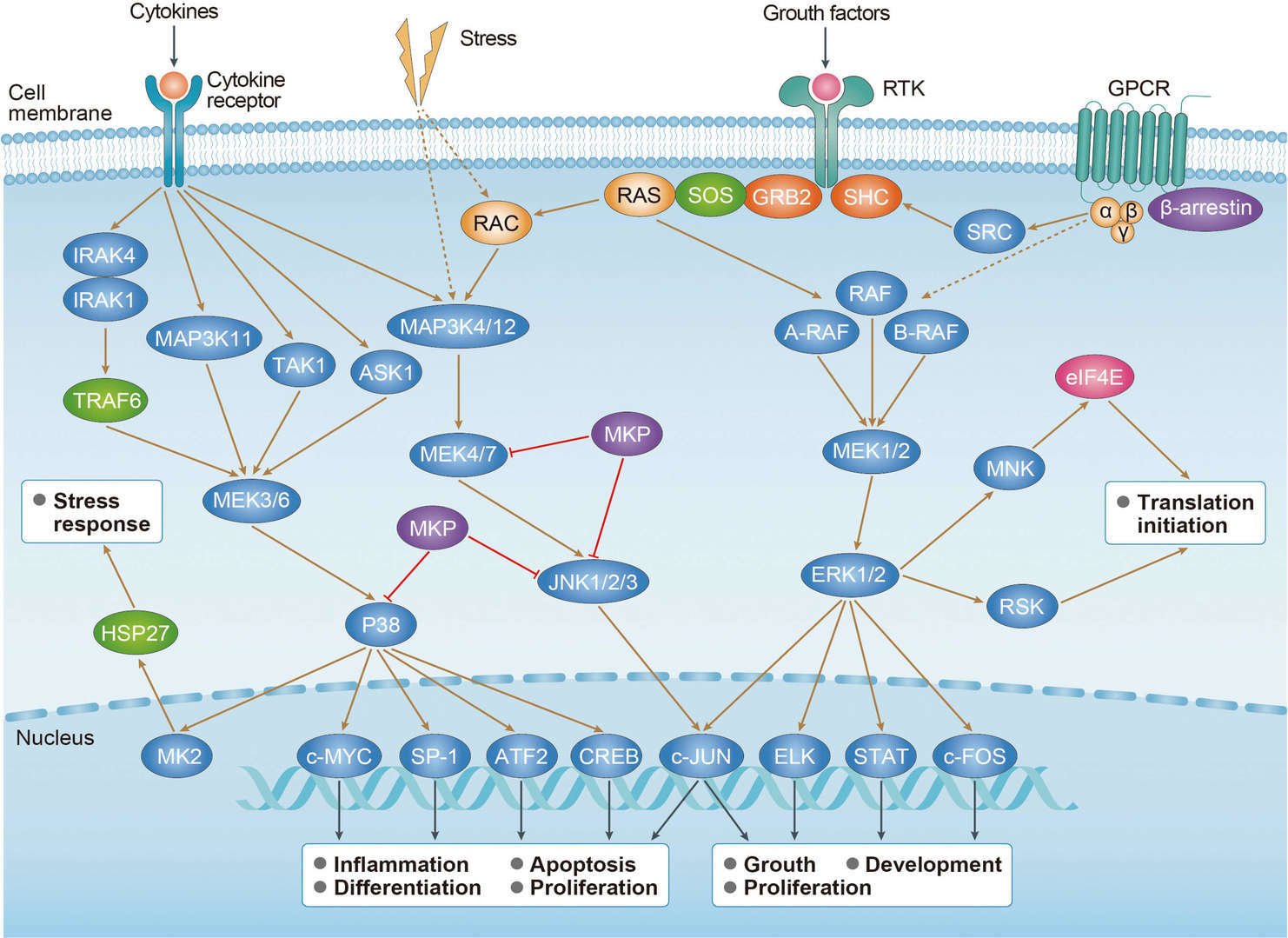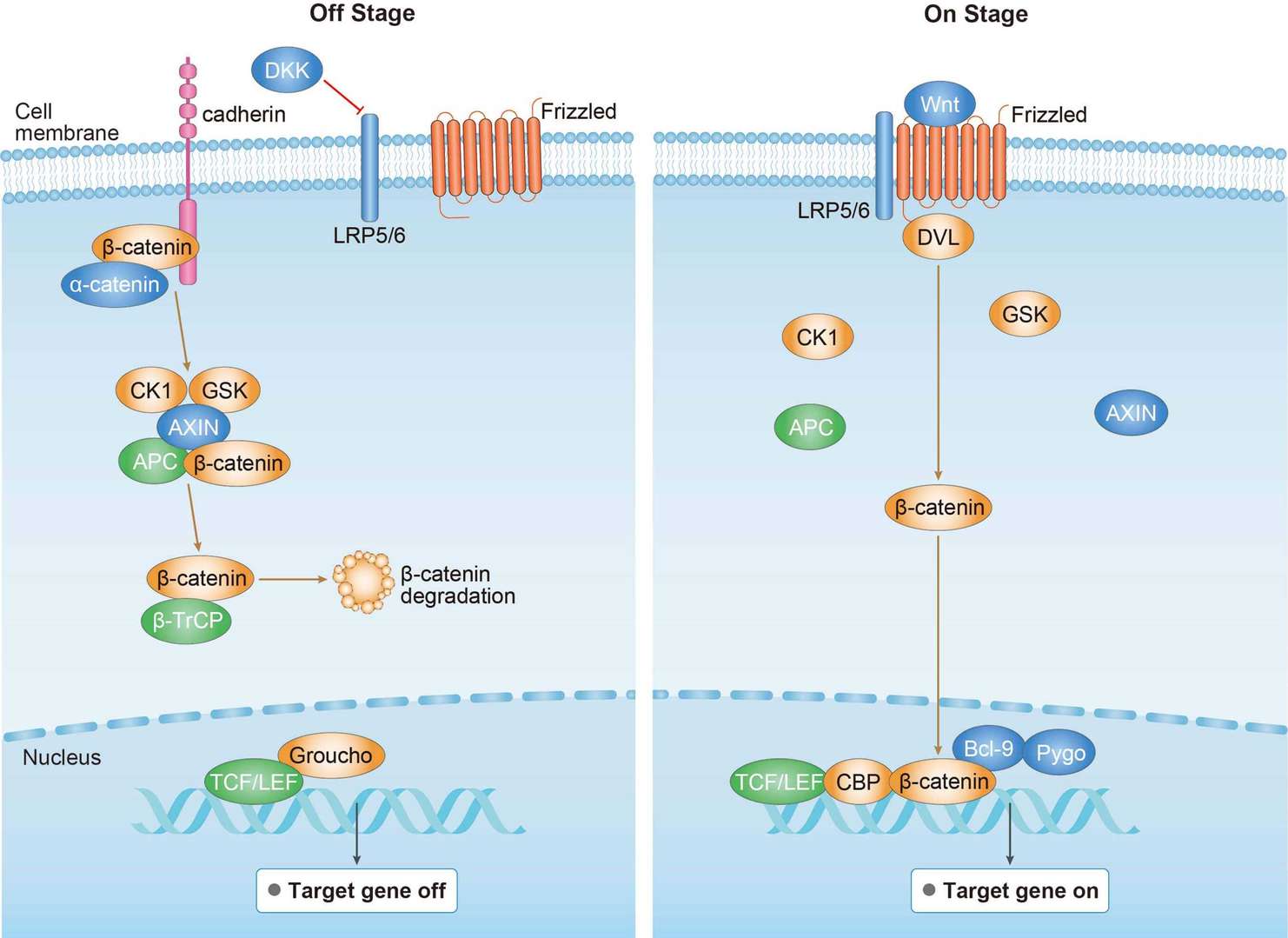JAK-STAT Signaling Pathway
About JAK-STAT Pathway
JAK-STAT is a signal transduction pathway stimulated by cytokines, which is involved in many important biological processes, such as cell proliferation, differentiation, apoptosis and immune regulation. This signaling pathway is mainly composed of tyrosine kinase related receptors, tyrosine kinase JAK and transcription factor STAT. The JAK protein tyrosine kinase family consists of four members: JAK1, JAK2, JAK3 and TYK1. Among them, JAK1, JAK2, Tyk2 is widely distributed in human and mice, and JAK3 is found in tumor cells and hematopoietic cells. It was found that there was no specific correspondence between cytokines and JAK kinase. That is, a cytokine can activate a variety of intracellular JAK kinases, and multiple cytokines can activate the same JAK kinase at the same time. However, cytokines and STAT molecules have specific selectivity. STAT molecule is a unique protein family with seven members, STAT1, STAT2, STAT3, STAT4, STAT5a, STAT5b, STAT6, which can bind to DNA. STAT1 is mainly involved in the response of INFs, which is related to virus sensitivity and intracellular pathogen infection. STAT2 was only activated by IFN- α / β and IFN- λ s. STAT3 can be activated by cytokines IL-6, IL-10 and IFN- α / β, which is closely related to the development of tumor. STAT4 can be activated by IL-12, IL-23 and IFN- α, and IFN receptor can be activated by interaction with STAT2. Both STAT5 and STAT6 can be activated by a variety of cytokines. STATs protein can be expressed in many types of cells and participate in the normal physiological process of cells, but it is also abnormally expressed in malignant tumor cells.
JAK-STAT signaling pathway can be stimulated by a variety of ligands and receptors. When two ligand molecules bind to two receptor molecules to form a dimer, intracellular signals are activated. Receptor dimerization reduces the distance between the two JAK, and trans-phosphorylation occurs. Phosphorylated JAK can phosphorylate receptors in turn. Phosphorylated receptor proteins expose phosphotyrosine residues, which are the binding sites of STAT proteins. Activated JAK also phosphorylates STAT when STAT binds to receptor proteins. Two phosphorylated STATs molecules can bind to each other to form STATdimer, an active transcription factor that recognizes and binds to specific DNA sequences. STATs dimer enters the nucleus through a mechanism that depends on imported protein α-5 (also known as nucleoprotein interaction factor 1) and RAN nuclear import pathway. In the nucleus, STATs dimer recognizes and binds to specific DNA sequences to achieve transcriptional regulation of the target gene. Therefore, JAK-STAT cascade signaling pathway provides a direct mechanism for transmitting extracellular signals to gene transcription level.
Associated Diseases
Related Pathways
For research use only. Not intended for any clinical use.
This site is protected by reCAPTCHA and the Google Privacy Policy and Terms of Service apply.


 Pancreatic Cancer
Pancreatic Cancer MAPK Pathway
MAPK Pathway Wnt Pathway
Wnt Pathway
